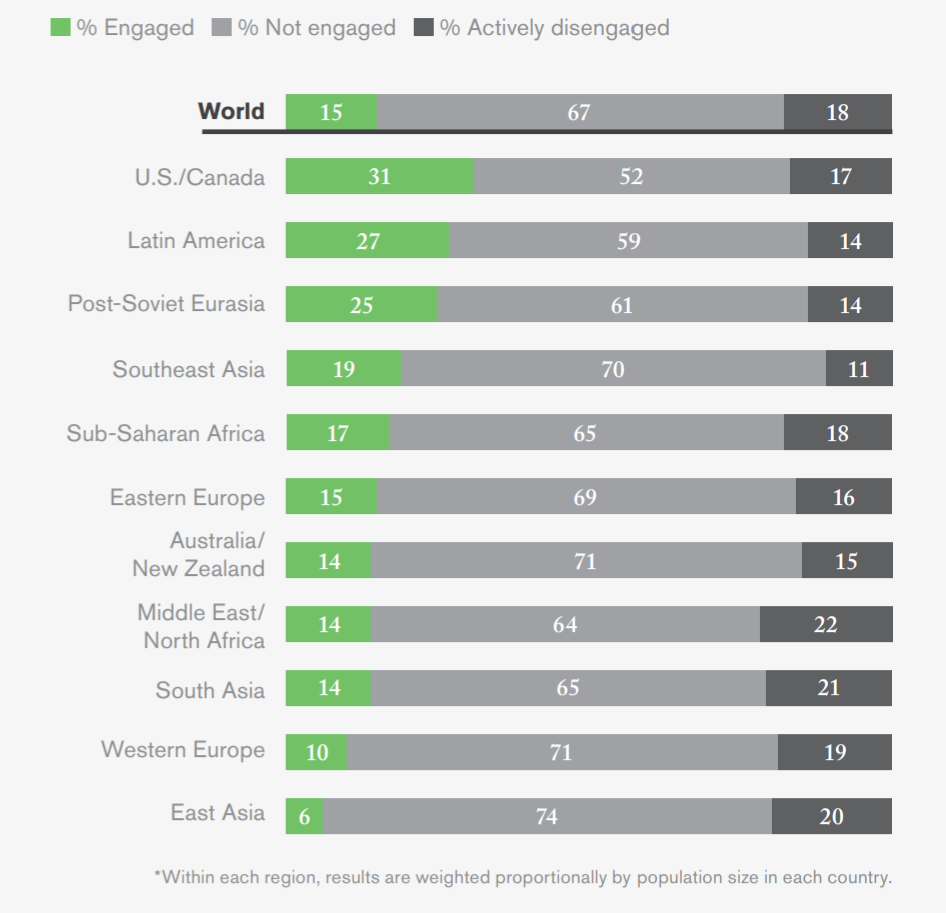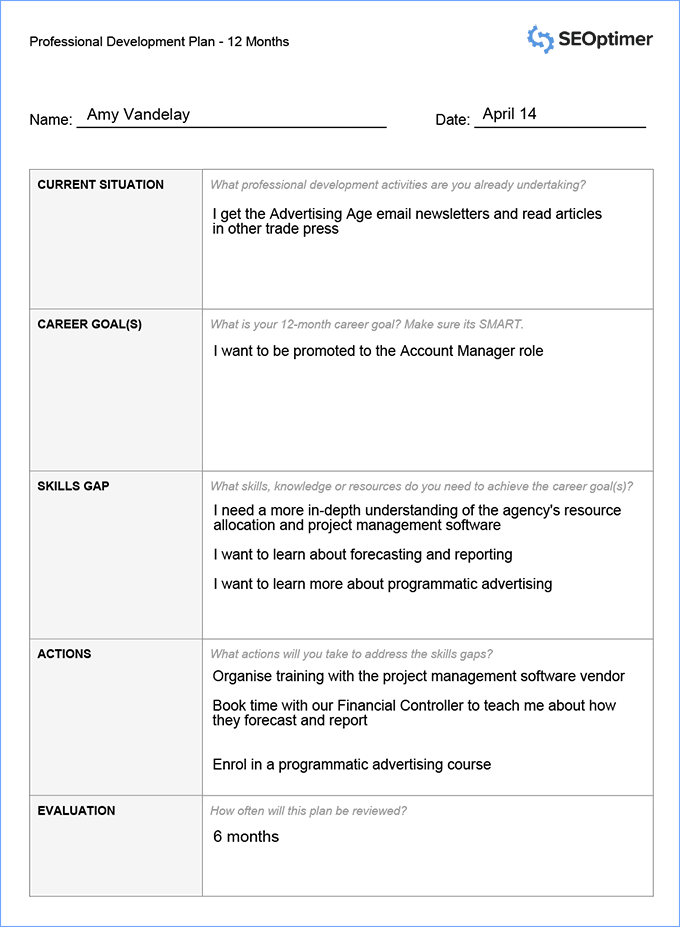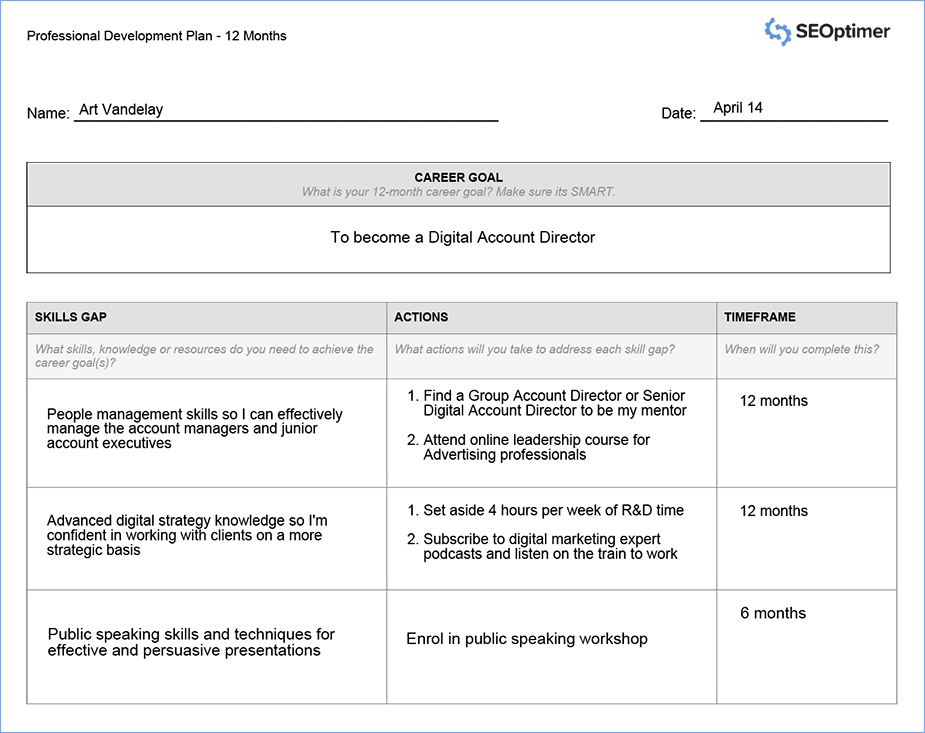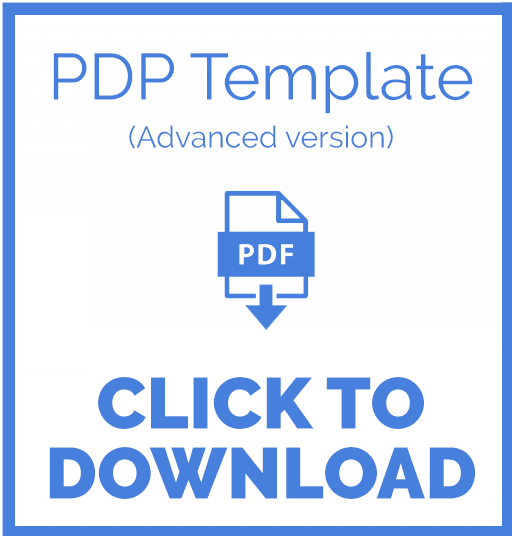
It was Richard Branson who said "customers come second, employees first". Investing in employees is the best thing an employer can do. In 2018 Gallup's State of the Global Workplace survey revealed that just 15% of employees feel engaged at work and an alarming 85% do not. While the number is different across regions, this study confirms what we know anecdotally - the majority of people are unhappy at work.

There are multiple factors that contribute to unhappiness at work. It's a complex problem. But two major contributing factors are (i) employees feeling undervalued and; (ii) employees feeling a lack of progression or advancement in their role. Both of these problems are by-products of employers not putting employees first.
What is a Professional Development Plan and why is it important?
While there is no silver bullet, a professional development program can make a positive difference and directly address these issues. An effective Professional Development Plan (PDP) can increase employee satisfaction and ultimately lead to increased performance. Happy, high performing employees are less likely to churn and are vital for fostering a positive workplace culture. A PDP is a document which outlines how the employer and employee works together to advance the employee's skills and career goals.
There is no one size fits all. Each employee has their own PDP and they are in charge of drafting and maintaining it. By giving ownership to each employee, this puts them in the driver's seat of their professional development and enables them to visualize their future self. Perhaps they want to learn new skills, find an industry mentor, get a pay increase, move departments, attend conferences, etc. All these aspects are informed by the professional goal that each employee has.
How to write a PDP
When it comes to writing the PDP, its vital the employee does this. They need to have responsibility for their own PDP and determine what they want to achieve, how they'll get there and the milestones. The employer's role is to inspire, help brainstorm, give constructive feedback and offer guidance - if its needed. The employer should never take control, dictate or write the PDP for the employee.
There are typically 5 sections in a PDP:
- Evaluate current situation
- Identify career goal(s)
- Identify skills, knowledge and resources required
- Determine actions to achieve goal(s)
- Determine evaluation frequency
1. Evaluate current situation
This section aims to uncover everything the employee is already doing from a professional development standpoint. Are they undertaking any training or courses? Do they go to industry events or conferences? Do they read books, blogs or other resources? Do they have a mentor? If nothing comes to mind for the employee, this is a problem. But don't worry, this is the reason why you're doing this - to put in place a PDP to help them grow professionally.

2. Identify career goal(s)
This is the big question and will probably take some thinking time and reflection for the employee to fully articulate. Where do they see themselves in 12 months? In 2 years? In 5 years? They need to visualize what 'career success' means to them. Reflecting on what they currently do and what they enjoy the most (and conversely what they enjoy the least) in their role is a good start.
Observing their senior peers in the business can help inform where they see themselves going. Prior to defining this, they may want to spend some time actively observing their senior colleagues or spending time talking to them to help identify natural career progressions in the business. Remind them that the career goal or goals they define for themselves need to be SMART:
Specific: Clear and well-defined without any ambiguity
Measurable: Able to be objectively measured
Achievable: Attainable and not impossible to achieve
Realistic: Relevant and within reach
Timely: Time-bound with a clear target date
3. Identify skills, knowledge and resources required
Generally, the gap between where the employee currently is and where they see themselves in the next 12 months can be addressed with training. But there are other resources that can assist like attending industry events, being a member of industry communities, subscribing to software tools, learning programs or finding a mentor. Speaking with colleagues and finding what works for their peers can be a good source of information for employees who recognize a skills and knowledge gap but may not immediately know how to address it.
4. Determine actions to achieve goal(s)
These actions need to be specific and they must be proven effective at addressing the items identified in the previous step. For each action, make sure the employee can demonstrate the link between action and outcome. Did they speak to a colleague or do research to ascertain this?
Make sure they understand the level of support they are receiving from the company. Companies that offer professional development programs need to provide an annual professional development budget to each employee. They can then use this budget when writing their PDP. There's no point in them getting excited about enrolling in a course only to find out the cost is beyond the budget that the employer is willing to offer. So make sure this annual budget is communicated to the employee upfront.
You can also scale the budget based on tenure and provide incentives such as annual roll-over (for unused amounts) or performance-based top-ups/bonuses.
5. Determine evaluation frequency
Finally, agree on an evaluation frequency where you meet to review performance towards the objectives and career goal(s). This is usually 6 or 12 months.
Download our Personal Development Plan template
Download our PDP template below so you can channel your inner Richard Branson and put employees first. There are 2 versions: the first version is a simple format best suited for junior staff who typically have straight-forward skills gaps and actions. We've called this the "Simple version". The second version is more in-depth where the career goal may need to be supported by multiple actions addressing multiple skills gaps in different timeframes. We've called this the "Advanced version". Choose the version that makes the most sense for each employee - Simple or Advanced.
Give the empty template to your employee (don't fill it out for them!). Tell them all the benefits of a PDP for their career progression. Explain each section thoroughly so they understand what to write down for each. Then leave it with them to complete on their own and send back to you for your feedback. Give them ample time (at least 1 week) to research and think properly about what they want to do and how they plan to achieve it.
Examples of completed PDPs
If its necessary, show some examples of completed PDPs to employees if they are struggling with the process. Here's a professional development plan sample for an employee working in a digital agency. This is an example of the "simple version" template:

This is an example of the "advanced version" template:

Checking in
Although you will set an overall timeframe for formal reviews of the PDP (either 6 months or 12 months), its good to have monthly or quarterly check-ins with your employees depending on your team size. These can be casual chats to ensure the PDP hasn't been forgotten about, especially in the first few months!












